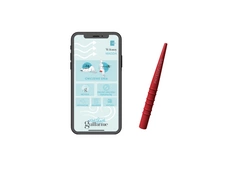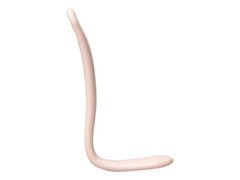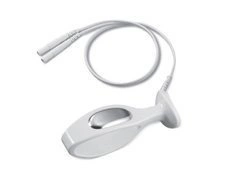During pregnancy, a problem known as isthmo-cervicalis, also known as cervical insufficiency, may arise. This is a disorder that prevents the cervix from effectively supporting the pregnancy, leading to potential complications. Cervical anomalies may include differences in its shape or structure. Early detection of this condition, preferably in the second trimester of pregnancy, allows for quick intervention and implementation of measures to protect the pregnancy and ensure safe delivery. Typical symptoms include dilation and shortening of the cervix, which, occurring in the early stages of pregnancy, may pose a threat and influence its further course and the outcome of delivery. A shortening of the cervix may affect the development of the fetus, although this is not a rule.

How common is cervical insufficiency?
Cervical incompetence is a relatively rare condition, affecting approximately 1% to 2% of all pregnancies. Despite its rarity, it is one of the leading causes of premature birth in the second trimester of pregnancy. The risk of cervical insufficiency may increase for women who have experienced previous cervical surgery, trauma during previous births, or as a result of certain medical procedures. Diagnosis and treatment of this condition are crucial to preventing premature birth and increasing the chances of carrying a healthy pregnancy to term.
Construction of the obstetric pessary Dr. Arabin (cerlage):
The obstetric pessary is made of safe medical silicone. Perforations allow discharge of vaginal discharge. The obstetric pessary is a therapeutic product and intended for single use.
The purpose of the pessary is to reduce tension on the cervical tissue and change the uterocervical angle. Indication, application and monitoring should be performed by an experienced obstetrician who is familiar with the technique and has knowledge of the complex syndrome of premature birth. The purpose of use is to prolong pregnancy to improve neonatal outcomes.
How to choose the size of an obstetric pessary?
Size indications are relative and may be adjusted depending on the situation. With larger size, durability also increases. Generally, cerklage pessaries are selected based on:
a) Outer diameter:
- 65 mm for women without previous vaginal births,
- 70 mm for women after vaginal births, and the individual situation is also important.
b) Pessary heights:
- 17mm rarely in the first trimester, 3-5% of cases,
- 21mm in singleton pregnancies used in 95% of cases,
- 25mm in multi-fetal pregnancy and/or problems with organ descent) - 1-2% of cases.
c) Inner diameter:
- 32 mm at each cervical shortening,
- 35 mm only with a wider cervix and/or U-shaped funnel formation to avoid manipulation.
If the size of the pessary is not selected correctly, it may cause pressure on the rectum, in which case a pessary of a smaller size should be used.
Inserting the cervical collar pessary:
The insertion of an obstetric pessary always takes place in a doctor's office. The doctor should insert the pessary in the lying position. The pessary can be folded and inserted without pain. It is crucial that the convexity of the pessary is directed upwards with its smaller diameter. During insertion, the pessary remains folded until it reaches the upper vaginal fornix, where it is gently advanced as high as possible into the posterior vaginal fornix so that the entire cervix is within the upper diameter ring. A short press on the front edge enhances rotation in the sacral direction. The patient should not feel the pessary. If there are no symptoms, the pessary should remain in place until approximately the 37th week of pregnancy. The cervix must be gently moved back before removal. In case of a planned caesarean section, the pessary can also be removed in the operating room.
It is crucial that the conical part of the pessary points upwards, which allows the larger opening of the pessary to effectively support the cervix, using the support of the pelvic floor muscles. The ability to bend the pessary during insertion makes its application painless. The pessary can be placed as high as possible in the back of the vagina, but it is important that the cervix is inside the upper (smaller) opening of the pessary. Incorrect positioning of the pessary with the cone down prevents adequate support for the cervix. During subsequent medical visits, it should be verified whether the upper (smaller) opening of the pessary does not press too much on the cervix. The appearance of slight cervical swelling may be a desirable result. If the pessary is properly installed, the patient should not feel it at all. Any problems resulting from uterine and vaginal depression usually disappear immediately after pessary placement, which may encourage both the patient and the doctor to continue therapy.
What does the therapy look like for a patient with an obstetric pessary?
After the first pessary insertion, the patient should be re-examined after about a week. At the first follow-up visit, the position of the pessary should be checked and it should be documented that the cervix is surrounded by its internal diameter. The patient should be under the care of the same doctor throughout the treatment, preferably a doctor specializing in the care of patients at risk of premature birth, in a specialist clinic for those at risk of premature birth.
Ultrasound examination of the vagina with a pessary in place is possible; in this case, it is best to insert the ultrasound head on the upper lip of the cervix because the pessary absorbs the ultrasound waves. If this is not possible or is uncomfortable for the patient, the vaginal probe should be directed in a sacral direction and placed behind the pessary. The position of the pessary can be easily determined without touching the cervix by clinical examination.
Further testing intervals and additional treatment strategies depend on the risk of premature birth. Due to the difficulties in predicting the dynamics, check-ups should be carried out at least until the 34th week of pregnancy only by an experienced perinatal medicine specialist. In asymptomatic patients with a stable cervix, pregnancy can be monitored on an outpatient basis.
Possible problems, complications and side effects of use
Although pessaries are a safe form of treatment, they constitute a "foreign body". The most common side effect is:
- Increased secretion, which should not be confused with the outflow of amniotic fluid. Such a mistake could lead to premature removal of the pessary,
- Removal of the pessary due to suspected rupture of membranes, ultrasonography of the amount of amniotic fluid and biochemical tests may exclude or confirm rupture of membranes,
- During defecation or in case of problems with organ descent, the pessary may move lower and, in the worst case, become dislodged. The patient should be informed about this and, if necessary, she can gently move the palpable pessary back up along with the descending uterus,
- In case of symptoms of painful contractions, bleeding, premature rupture of the amniotic membranes, patients should immediately seek medical advice who will decide whether to remove the pessary,
- In rare cases, it may be necessary for your doctor to change the size of the pessary. In general, changes should be kept to a minimum,
- If the pessary slips or may become dislodged, a doctor should be consulted immediately to adapt the treatment to the current anatomical situation and to prevent further complications.
Contents of the package:
- Perforated obstetric pessary (cerclage) Dr. Arabin size 70/25/35 mm - 1 pc,
- User manual.
Note: Returns are not possible after unpacking the product.





















